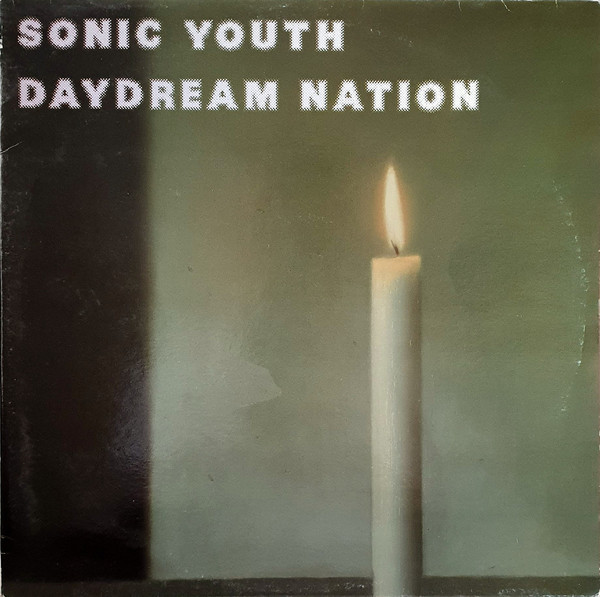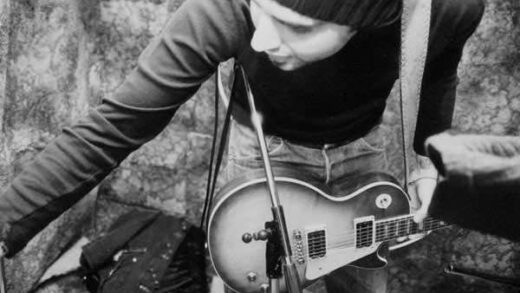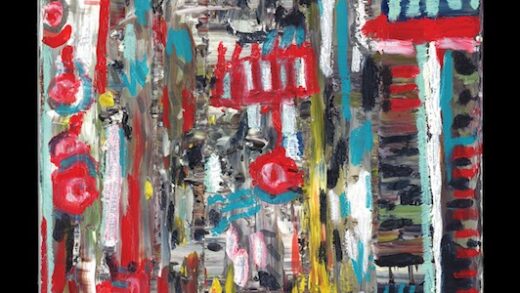 by Joshua Pickard
by Joshua Pickard
This is a first in a series about the most influential alternative and indie rock albums, dating back 30 years
Sonic Youth is an indie rock institution. Their music has provided influence to countless aspiring musicians, [as well as] those with a fondness for noisy, often perplexing rhythms. The indie scene wouldn’t be the same if it weren’t for (them and) their DIY punk rock philosophies.
Melding the occasionally jarring guitar lines of post-punk with a fondness for jazz-inspired fractured beats, Sonic Youth created an entirely new aesthetic that continues to evolve to this day. There’s never been a band who so completely revitalized a sound and wound themselves so deeply within a genre that their very name [conjures specific musical landscapes] is nearly synonymous with indie rock.
But Sonic Youth wasn’t only interested in creating densely stuffed packets of harsh melodies and apoplectic bursts of sound (although that certainly came naturally). They were interested in creating something new and distinct, a sound that replaced the venom of punk with something that could pass for a warped sense of community and an interest in ragged lo-fi workmanship. Their music was an often-jarring combination of various genres and production choices that drew inspiration from aspects of art-punk and avant-rock histories. It wasn’t difficult so much as it was challenging and asked more from its audience than was generally expected at the time.
Formed in New York City in 1981, Sonic Youth was initially the home of bassist Kim Gordon, guitarist Thurston Moore and guitarist Lee Ranaldo. All of them shared vocal duties to some degree and were instrumental in shaping the early works of the band. They went through a series of temporary drummers before Steve Shelley came on in 1985 and solidified the classic lineup. They were primarily associated with the no-wave movement of the late ‘70s and early ‘80s—a scene that typically favored experimental atonality and dissonant sounds in contrast to punk rock’s ferocious, though occasionally atrophied, the reimagining of classic rock stereotypes. Their work was abrasive, aggressively hostile and absolutely essential at a time when most musical landscapes were prone to a particular melodic disposability [sic].
But Sonic Youth came along and shook the independent music scene to its foundation. Impressed with their sound and seeing the band working at the cusp of something completely new and revitalizing in music, avant-garde composer-guitarist Glenn Branca—a no-wave patron saint in his own right—signed the band as the first act on his Neutral Records label. In December 1981, they recorded five songs at a studio in New York’s Radio City Music Hall, which was released as “Sonic Youth (EP).” And though it didn’t receive much in the way of the press or commercial success, it did highlight the band’s strengths and allow them to further develop their sinewy and bristling musical bearings.
Their first full-length studio record, “Confusion Is Sex,” was released in 1983 and found the band working through their influences with maniacal glee. After a series of subsequent records that acted as a refinery for their insular and damaged sound, the band slowly began incorporating broken pop melodies into their songs, resulting in an experimental vibe with trace amounts of a more traditional rock perspective. Fans needn’t have worried, though, as their songs were still laced with barbed and serrated guitar lines and a sense of twisted functionality that had been one of their defining traits ever since they first began recording.
By the time 1988 rolled around, the group had cemented its position as one of the greatest rock acts of the decade and was still charging ahead through new and often divisive musical landscapes. Having previously cut ties with Branca’s smaller imprint and subsequently with the coveted SST Records label, the band decided to release their double-LP “Daydream Nation” on Enigma Records, which was distributed by Capitol Records and was also affiliated with EMI. This record was the band’s first breakout commercial success—they had had some measure of it before, but now that they had some muscle behind their distribution, their records were reaching a far larger audience than ever before.
Unanimously hailed as a masterpiece by critics and fans alike, “Daydream Nation” is a sprawling work of art that fashions high-concept rock from the band’s punk and DIY ethos. Recorded at New York’s Greene Street basement studio, the album became one of the most influential releases of the burgeoning indie rock genre and continues to stand as one of the most important releases of the ‘80s, regardless of genre. Sonic Youth took the harsh noise of their early no wave experiences and riveted it to a skewed rock skeleton, resulting in a collection of songs that are as fiercely distorted as they are meticulously crafted.
From the opening rock salvo of “Teen Age Riot” to the lengthy and fractured closing track, “Trilogy,” the band brought the sum total of all their influences and inspirations to bear on this record. They were reveling in the mixture of pop, rock, jazz and strains of experimental music that find purchase in these songs. “Daydream Nation” was both their most accessible record up to that point and their most contentious among certain fans. This was the moment when Sonic Youth shook loose the underground characterizations and were exposed to the mainstream musical marketplace—and rock music would never be the same.
Taking their rightful place in the pantheon of indie rock bands who pushed past the limitations of their own time and constructed an entirely new perspective on their approach to music, Sonic Youth became the example, the band people pointed to when trying to describe other bands who couldn’t be easily labeled or categorized. When looking at “Daydream Nation” specifically, and the band in general, genres didn’t matter. The music is less a product of its direct surroundings and more an expulsion of sordid creative debris from a group of like-minded individuals who were infatuated with the possibilities of their musical impulses. It is a wild, unpredictable and uninhibited view into the creation of something necessary and new. And as it turns out, unsurprisingly, that was exactly what people needed.
Tracklisting:
Teen Age Riot 6:56
Silver Rocket 3:46
The Sprawl 7:39
‘Cross The Breeze 7:00
Eric’s Trip 3:46
Total Trash 7:30
Hey Joni 4:17
Providence 2:39
Candle 4:57
Rain King 4:38
Kissability 3:06
Trilogy: a) The Wonder 4:27
Trilogy: b) Hyperstation. 7:04
Trilogy: z) Eliminator Jr. 2:37
By Pitulah





